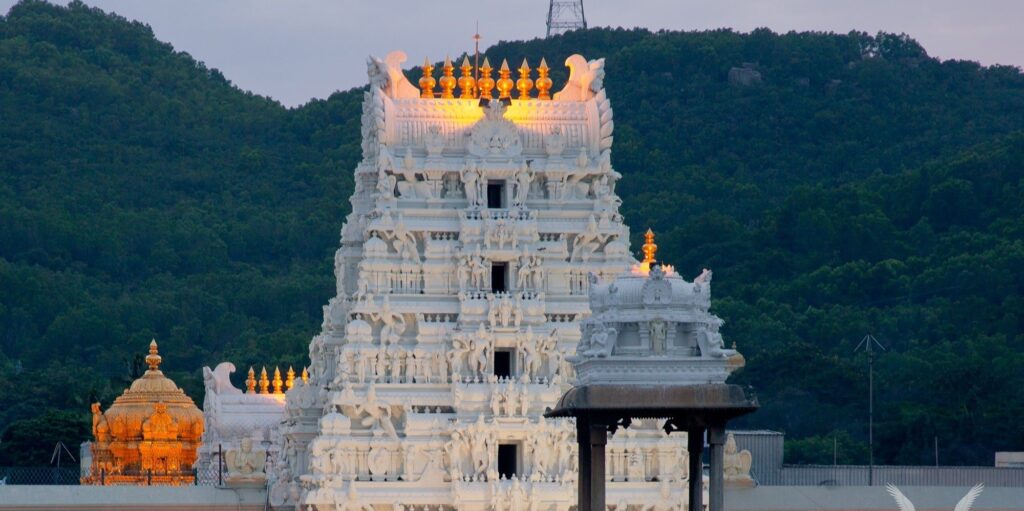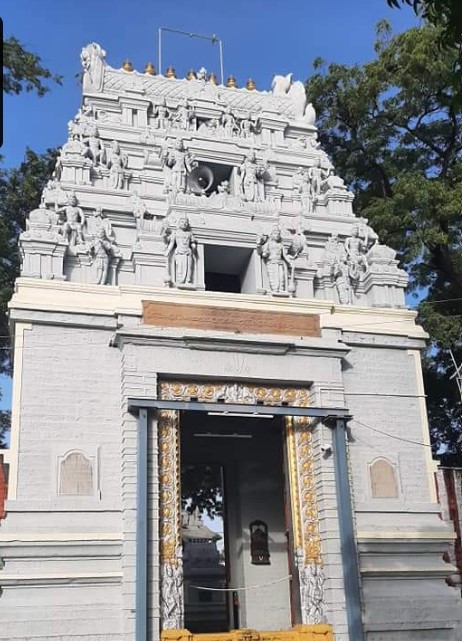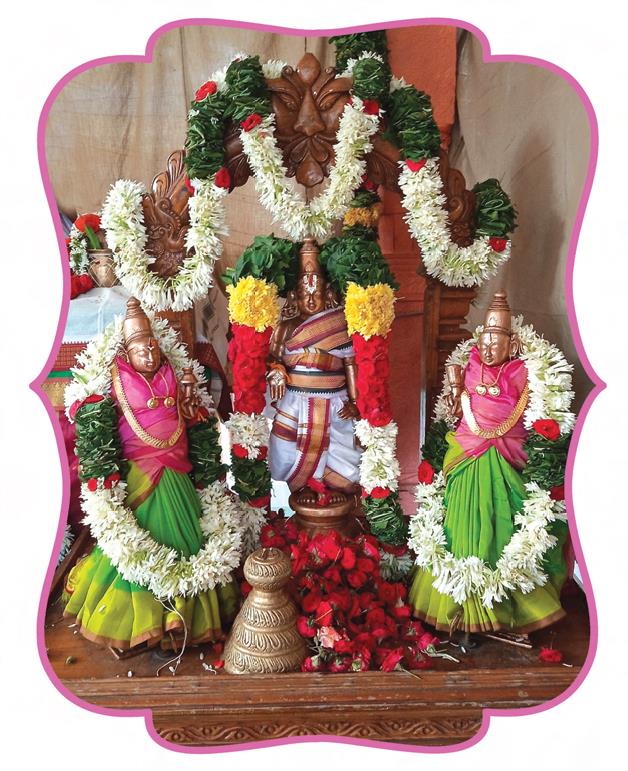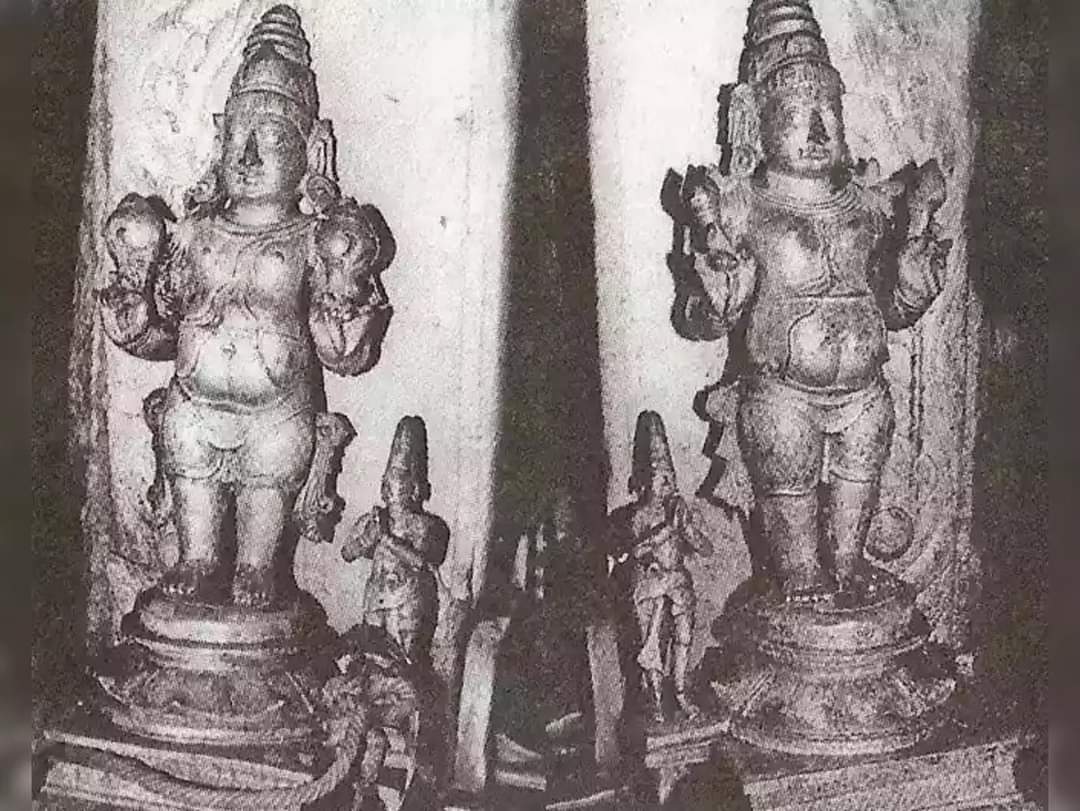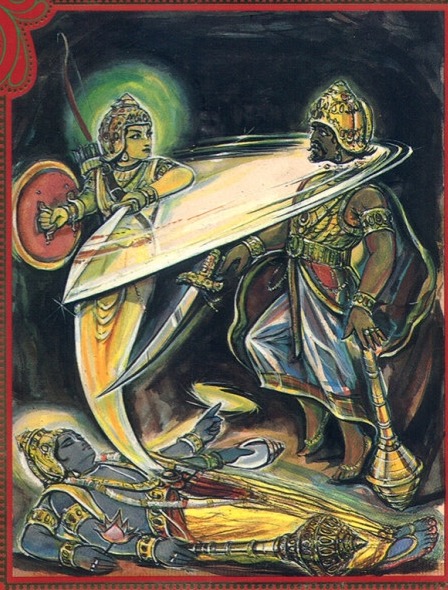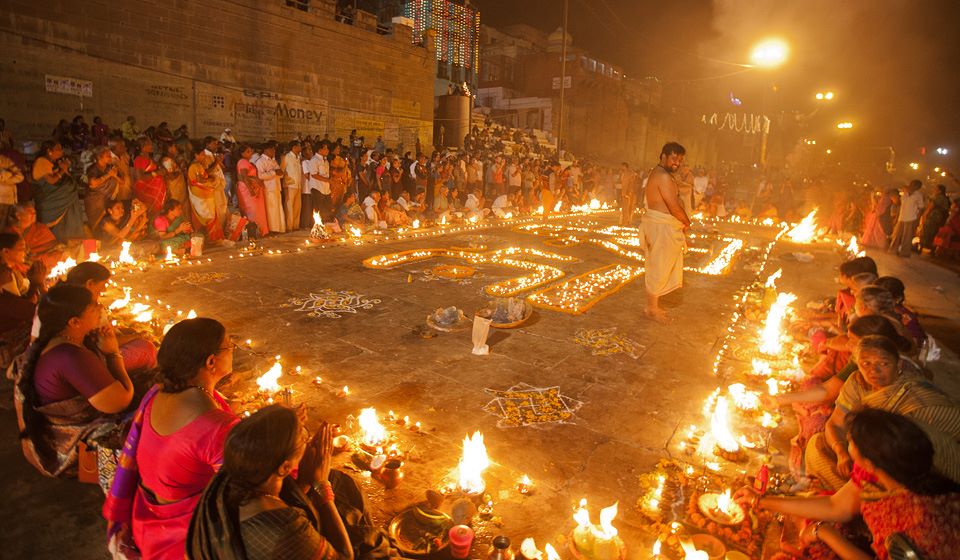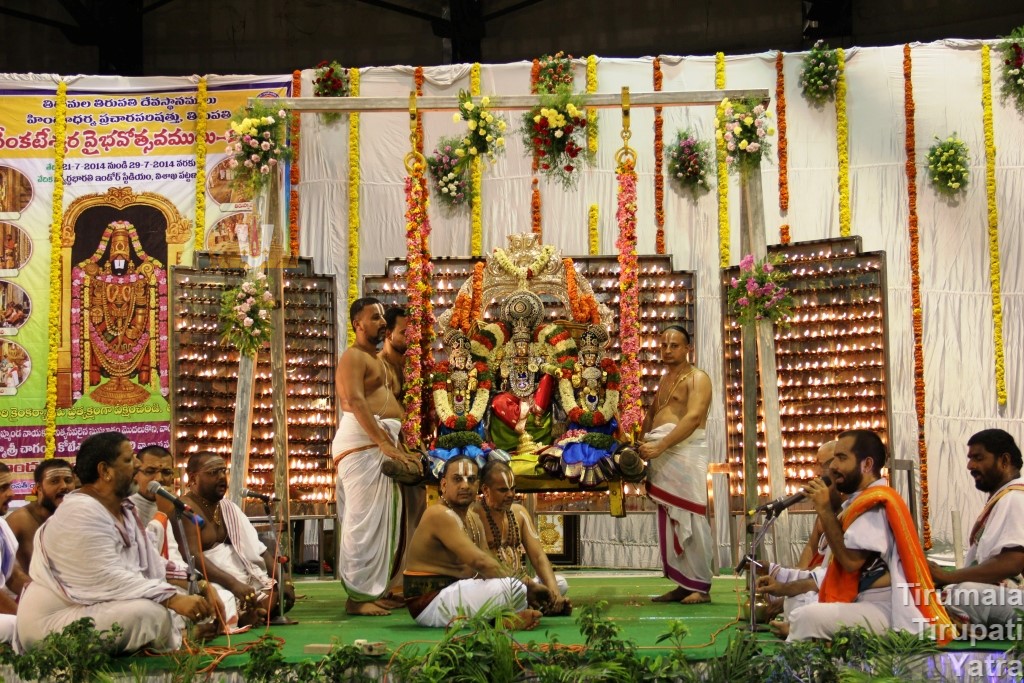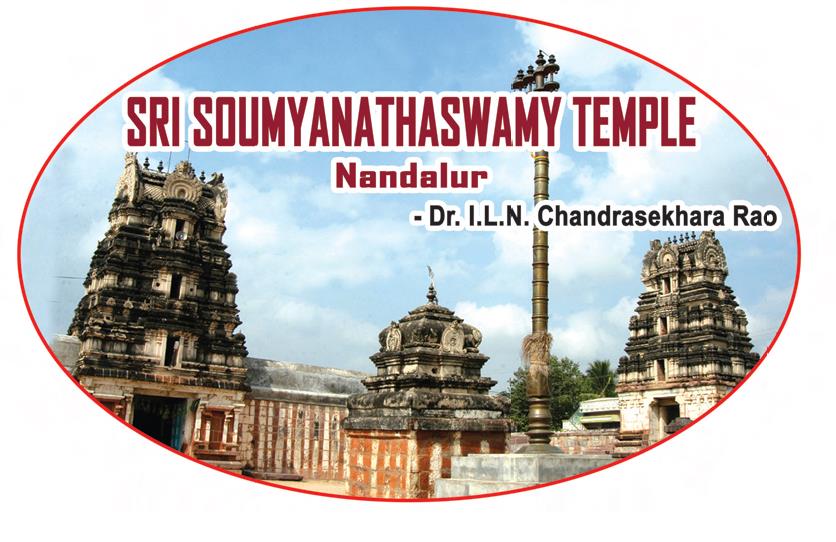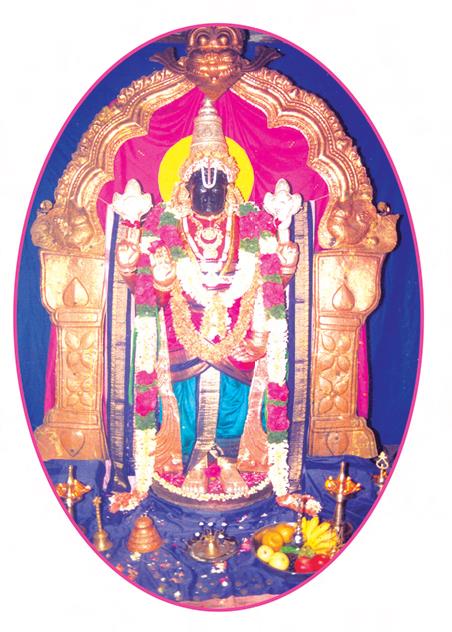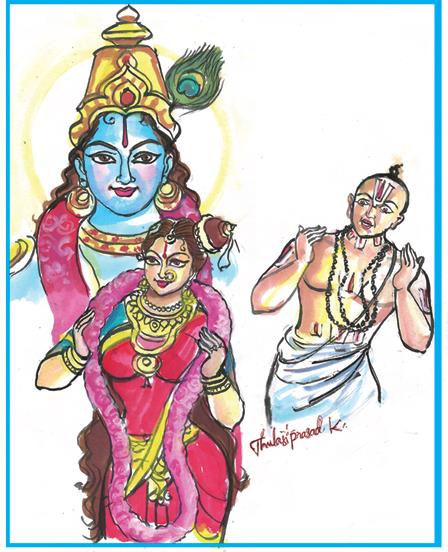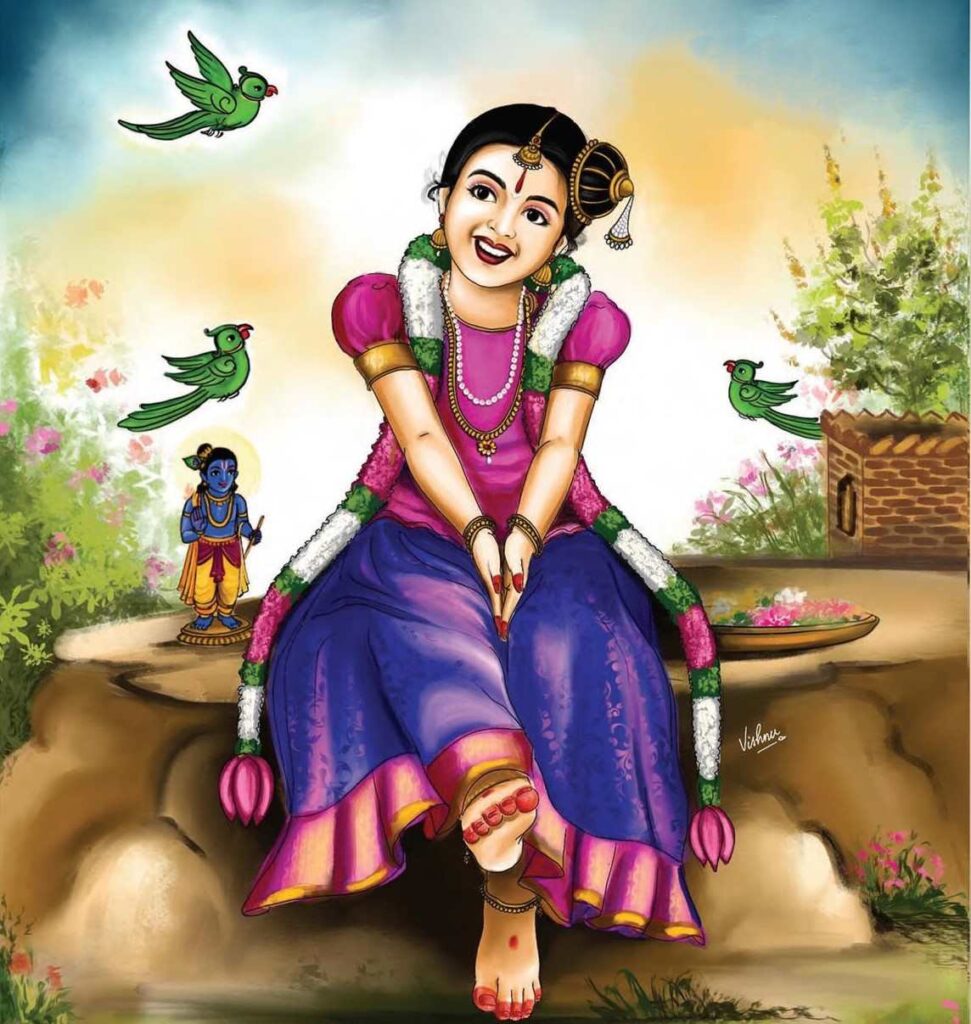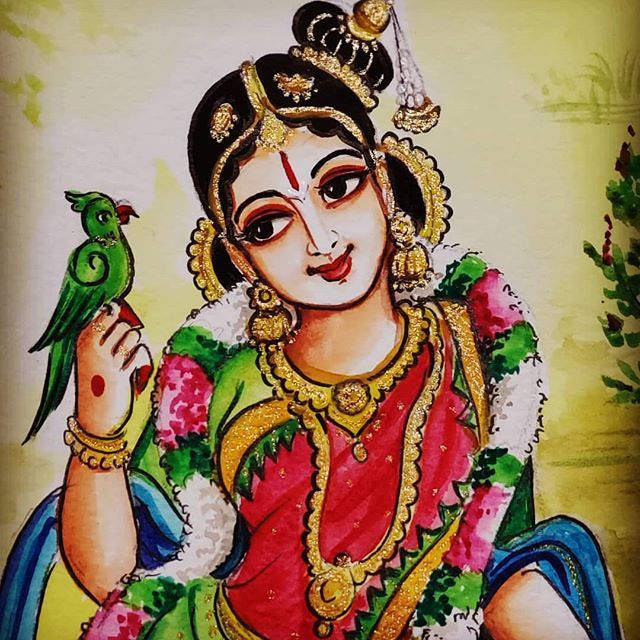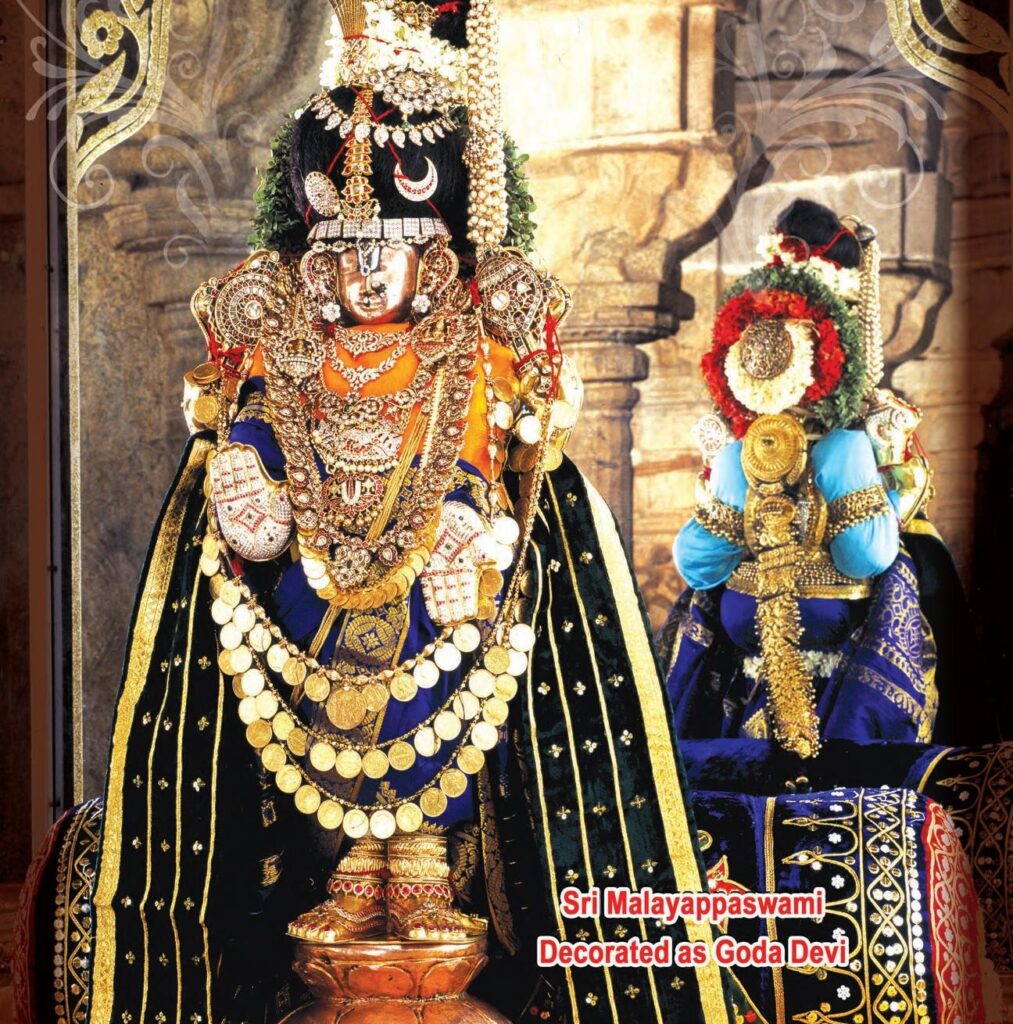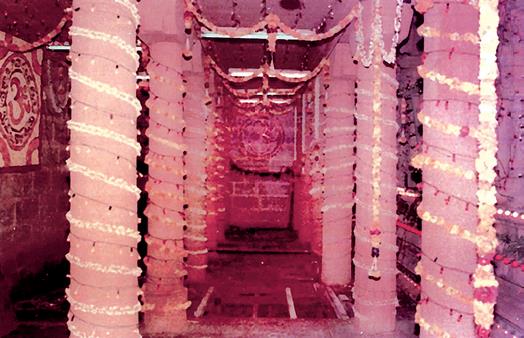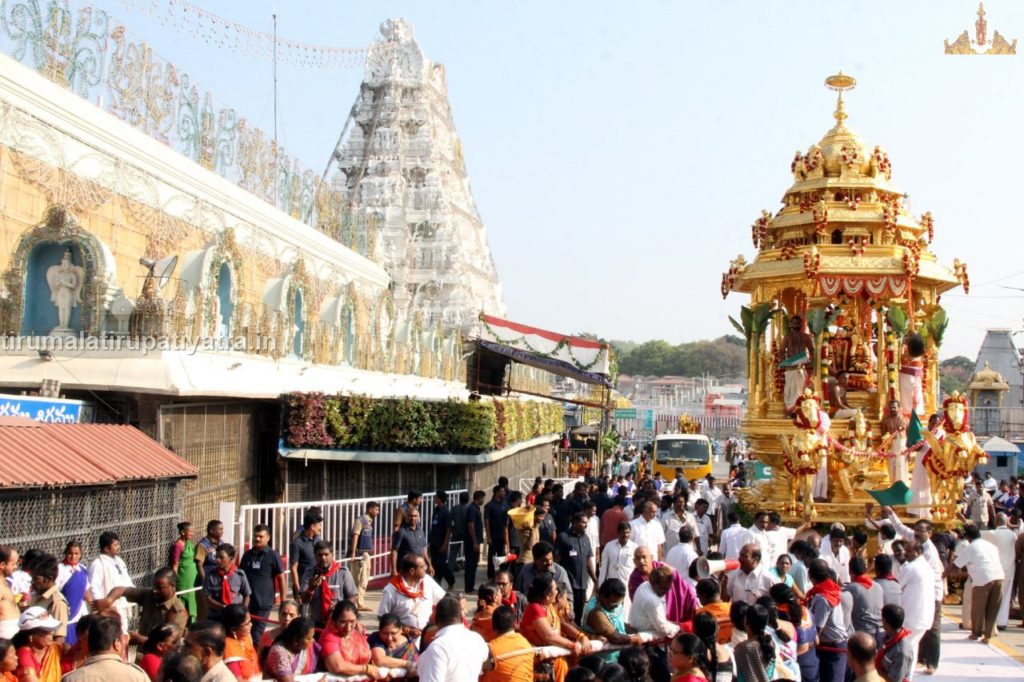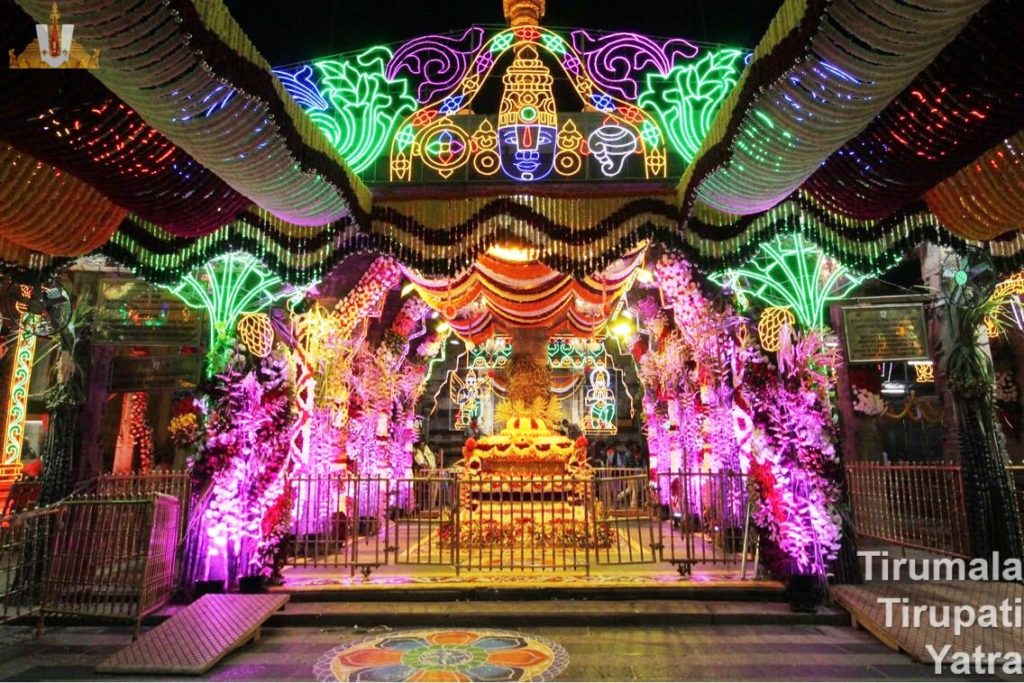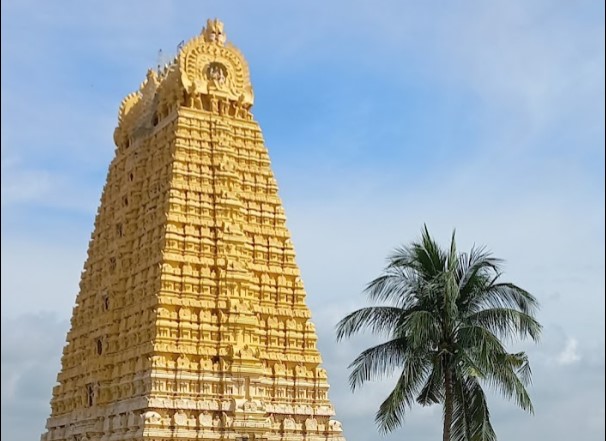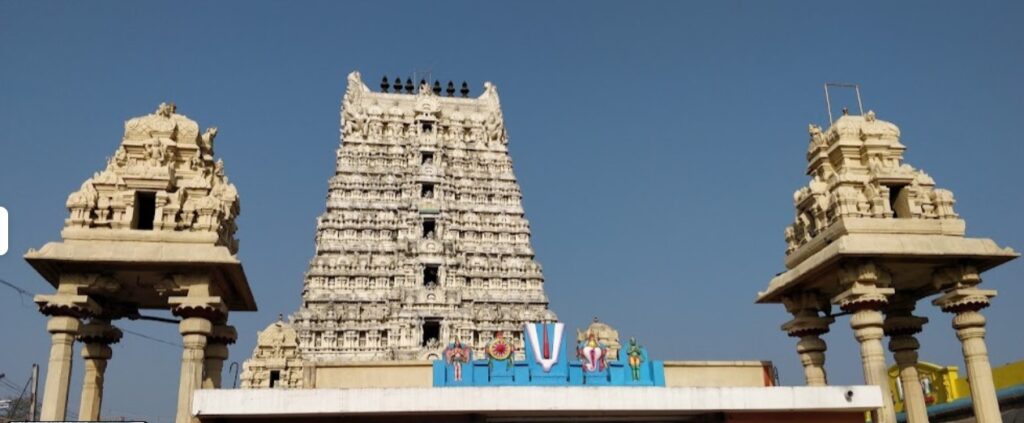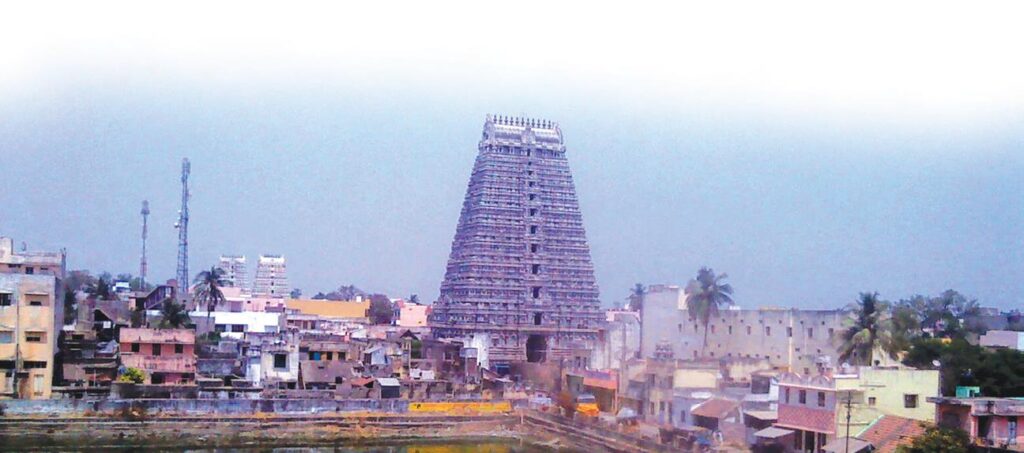The Chief Idol – Sri Venkateswara Swamy, Tirumala (Tirupati)
The Self-Emerged Idol of Lord Venkateswara is standing on a golden lotus base. Have a good look at the Lotus Feet of Lord Venkateswara. He has silk robes. The dangling garlands are further beautifying the silk robes.
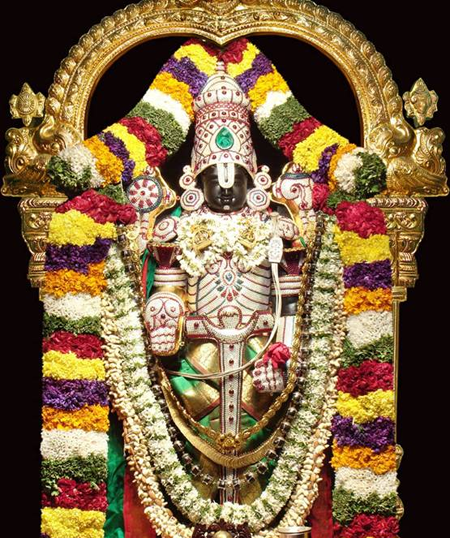
- Near Lord’s naval there is a sword by the name of Nandaka Khadgam.
- There is one waist belt made of gold with gems and diamonds studded.
- The Blessing Hand is again studded with diamonds.
- The Lord’s Hand on the Hip says that if you sincerely seek shelter with Me, I will see that it becomes child’s play for you to cross the ocean of mundane existence.
- On His Chest, there is a Kausthubha Mani. He has many Navaratna Haras (necklaces) around His neck.
- Sri Maha Lakshmi Who is seated near His Chest is also blessing devotees with Her Blessing Hand.
- His consorts Bhoo Devi and Sri Devi too have costly necklaces. With Sacred Thread (Yagnopaveetam), bejewelled hands, and lengthy garlands of salagramas and Sankhu and Chakra, Lord Venkateswara is attracting devotees from the four corners of the world.
Charming Face
The charming face with an Alluring Smile on His Lips, smooth shining cheeks, white camphor dot on the chin, the chiselled nose, white religious marking on the forehead, the gems studded crown all these things make our Lord more attractive.
One will not know whether bejewelled God is beautifying the jewels or jewels are beautifying God. These jewels, diamonds, gems, precious stones etc., are donations of devotees donated at different times. One will not know what made them denote these jewels and why they preferred only this temple for those donations.
Let us meditate on this Ever Attractive Chief Idol of God by chanting: Govinda! Govinda!! Govinda!!!
Every piece of jewellery has an absorbing story behind it. Each diamond narrates the sincere devotion of its selfless donor. The glitter of gems adorning the idol reveals at length the sacrifices the devotee would have made and the blessing he would have received from Sri Venkateswara Swamy – Lord of Seven Hills when the devotee was in distress.
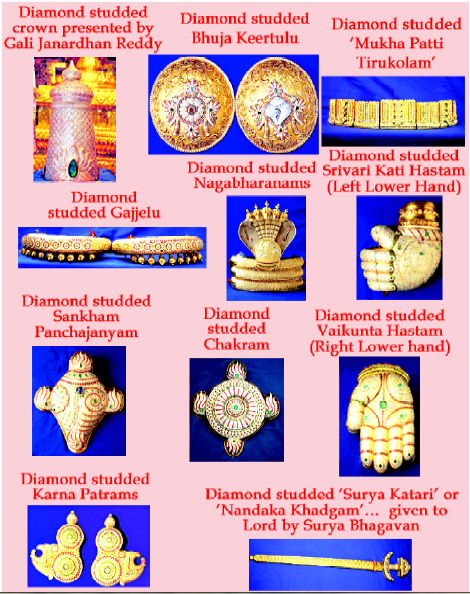
The musical sound that bracelets make symbolically tells how benevolent the Lord is towards His devotees. The splendid shining of the crown is proof of burning down the sins of devotees, committed knowingly or unknowingly, before seeking shelter near the Lotus Feet of the Lord.
The Panchajanya (a conch shell) and the Sudarshan Chakra by giving clarian calls would have punished wicked people who did much harm to humanity.
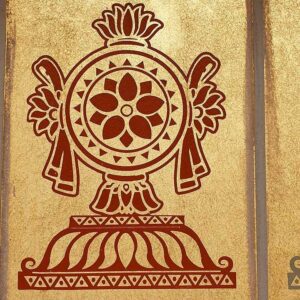
Through the broad smile Sri Venkateswara Swamy is acknowledging the prayers offered by devotees who would have received eyesight, some lame people who would have successfully, by the Grace of God, climbed the hills, the deaf would have got back their lost hearing ability etc.,
Those who have won their long pending cases too would have thanked the Lord for His solicited help. We may not know all the beneficiaries. Only He knows them.
All devotees irrespective of their caste, creed, and sometimes even faith whether they are Indians or even foreigners would have equally received the blessings of Sri Venkateswara Swamy – Lord of Seven Hills. After receiving beneficial help from the Lord they would have contributed their mite. Some rich devotees might have contributed a portion of their profit.
Ordinary devotees always contribute a part of their hard-earned money. The devotees appeal to Him as
- Aapada Mokkula Vada (one who removes all the obstacles)
- Vaddikasula Vada (who collects even interest when the devotees fail to deposit the amount they would have promised to offer)
- Apadbandhava (a friend of all those who are in distress) etc.,
However simple or complicated is your case, pray sincerely. He will come to your rescue at the right time. He will be by your side when others have ditched you. What He expects from His devotees is simple sincere devotion. Please have a good look at the Chief Idol – Sri Venkateswara Swamy.
Indeed, the thirst to see will not be quenched no matter how many times you visit the temple or how much time you spend in the Sanctum Sanctorum.
Once you come out of the Sanctum Sanctorum you feel you are a blessed person. But you will have a feeling that I saw only the Smiling Face or the Blessing Hand, glittering crown, or Koustubha near the Chest etc., I have not seen the Lotus Feet.
Every inch of the Chief Idol is so attractive that you will refuse to withdraw your eyes from that spot. Every time you visit the temple you will have a feeling that the Lord is more and more alluring than your earlier visit.
Before trying to know more details about the Sanctum Sanctorum let us chant the holy name of the Lord: Govinda! Govinda!! Govinda!!!
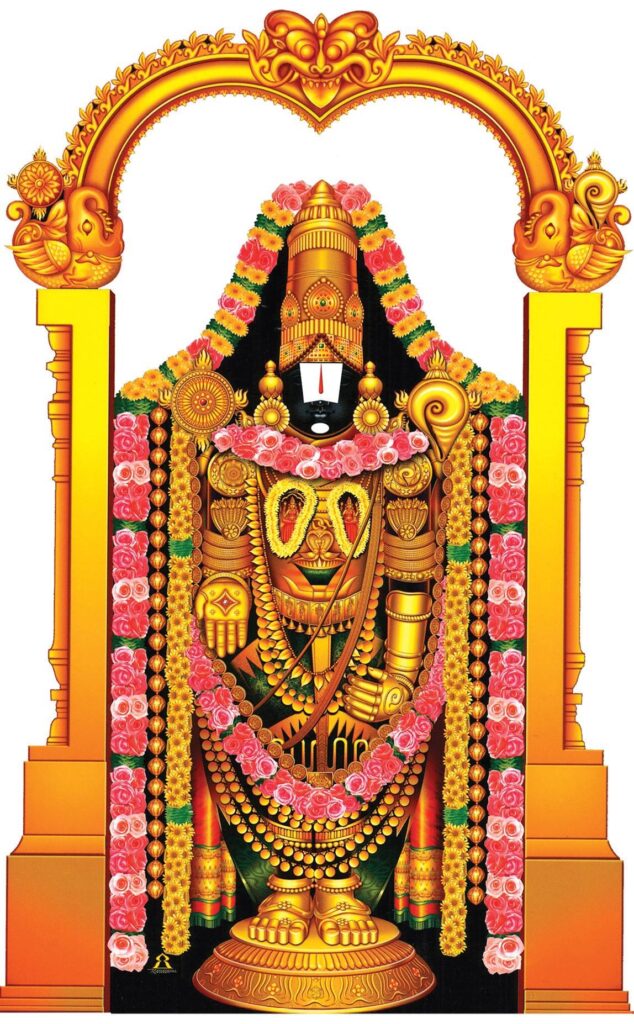
BRAHMA STHANAM
The Self-Emerged Salagrama Moorthy of Lord Srinivasa is exactly at the centre of Sanctum Sanctorum. This location is known as ‘BRAHMA STHANAM’.
STHANAKA MOORTHY / STHANAKA VARAHA MOORTHY
Because of this, the Chief Idol is termed as ‘STHANAKA MOORTHY’. Because it is immovable, people call it ‘DHRUVA (PERMANENT) MOORTHY’ or ‘DHRUVA BERAM’ (Permanent idol or image).
Here He is not accompanied by His two Consorts. He has only VAKSHASTHALA (on the chest) LAKSHMI. Hence he gets the name of STHANAKA VARAHA MOORTHY.
Vakshasthala Maha Lakshmi
With Vakshasthala Maha Lakshmi, Sri Mahavishnu left His Celestial Abode Vykunttam and came down to Bhooloka and preferred to stay on TIRUMALA HILLS and valleys as a Self Emerged Salagrama Moorthy. All other idols that we find in this temple are later additions. For this reason, Tirumala has been mentioned as ‘EKA BERAM’ (only one idol) temple.
Four Hands
This Self-emerged Salagrama monolithic idol has four shoulders.
- The upper right hand holds SUDARSHANA CHAKRA and
- the left upper hand has PANCHAJANYA (conch shell).
- Similarly lower right hand has ABHAYA MUDRA and
- the lower LEFT HAND IS ON THE HIP.
On the Chest, we can see the insignia of LAKSHMI. The Idol appears leaning slightly towards the left. Looking through the corner of eyes with a bewitching smile on face, the Moorthy enthrals the devotees.
The Sankhu and Chakra that we see on the right and left hand respectively, it seems, were not there originally.
Maybe during Ramanujacharya’s time or after him, seeing that the Chief Idol is without any weapon, they would have added gold-plated copper plates to the Idol. This may be true. He is Mahavishnu with or without Sankhu and Chakra.
“Padmaavatheem Vishaalaakshim Bhagavaanaatmaa
Vakshasi
Ari Sankha Viheeno Asau Katinyastha Karottamaha
Darshayan Paani naikena Dakshinena Vrishaakapihi
Pada Padmam Suraa Aaraadhyam Gatim cha Paramaam
Nrunaam
Katinyastha Karenaapi Nija Padaabja Kaaminam
Nrunaam Bhava Payoraasim Katidaghnam
Pradanshyan
Viraajathe Venkatesaha sam Pratyapi Ramaapathi”
-Venkatachala Maahaatmyam
As He has kind-hearted Sri Maha Lakshmi in His Chest, He discorded fearful Sankhu and Chakra. Therefore He has assumed a pleasing form to clear all mundane fears of humanity. This Ramapathi, the Lord of Venkatagiri is pleasing everyone by showering His countless blessings.
Thondaman getting Sankhu and Chakra
Earlier there took place a pitched battle between Thondaman and Sri Padmavathy’s brother Vasudas. It is said that Lord Venkateswara to whom devotees are more dear, had handed over His Sankhu and Chakra to Thondaman.
The Venkatachala Mahatmyam further says that after the battle, Lord Sri Venkateswara refused to take back His Sankhu and Chakra from Thondaman. As He had not received them, the Self Emerged Salagrama monolith idol is not having these two weapons of Sri Mahavishnu.
Apart from this according to Vykhanasa Agama Shastra, there is no hard and fast rule that all idols should have weapons. Some may or may not have weapons. As a prominent place is given to Sri Mahalakshmi near His Chest, undoubtedly proves that the Self Emerged Idol is that of Sri Mahavishnu only.
